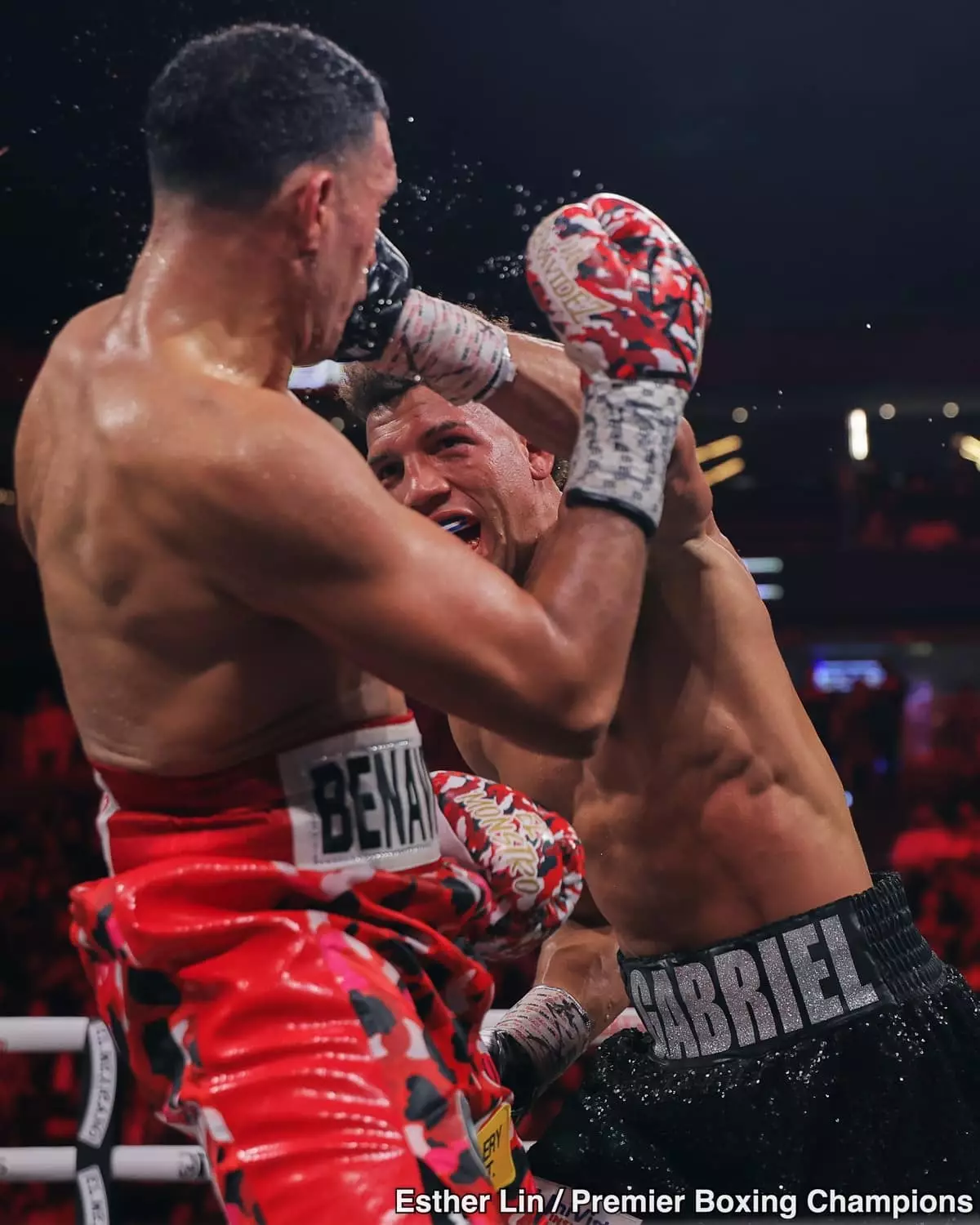The recent showdown between David Benavidez and David Morrell has sparked lively discussions within the boxing community. A compelling 12-round battle at the T-Mobile Arena in Las Vegas, this fight has left many fans and analysts questioning the result, the judging, and the future trajectories of both fighters. The fight’s aftermath highlights the inherent drama and unpredictability of the sport, further emphasizing the need for clarity in scoring and prospects for rematches that could redefine legacies.
The fight showcased two distinct styles: Benavidez’s aggressive approach versus Morrell’s sharp, powerful punches. This clash was not just physical but stylistic, as each boxer brought unique strategies to the ring. Observers noted the palpable difference in the impact of their punches; Morrell’s strikes appeared to carry more force, often disrupting Benavidez’s rhythm. The stark contrast was evident in their physical appearances post-fight. While Morrell exited the ring looking fresh, Benavidez bore the marks of a brutal encounter—his swollen visage telling a story of resilience, yet indicating the effects of Morrell’s accurate counterattacks.
Despite the 12-round unanimous decision declared in favor of Benavidez, with scores of 115-111, 115-111, and a more telling 118-108, many argued that the bout was closer than the scores implied. Morrell’s clean, powerful shots certainly seemed capable of swaying the match in his favor, leading some critics to suggest that the fight might reasonably have been scored a draw, or perhaps even a victory for Morrell, depending on the evaluation criteria utilized.
The controversy surrounding the decision raises critical questions about the judging in boxing. Critics argue that professional boxing should not merely adhere to amateur scoring standards, which often prioritize quantity over quality. Morrell’s substantial impact in the ring invites a reevaluation of what constitutes effective scoring. Insight into the judges’ decision-making process is necessary for both fans and fighters to regain confidence in the system. The question remains: if power shot impacts aren’t adequately recognized, what does that say about the integrity of the sport?
Furthermore, the dispute over penalties—Morrell receiving a warning for allegedly hitting after the bell while Benavidez did so without consequence—hints at the inconsistencies in officiating that can overshadow the athletic performance itself. This scenario can leave fighters and fans alike feeling that the outcome was dictated more by the referee’s judgment than by the fighters’ abilities.
Given the competitive nature of the fight and the apparent demand from fans for a rematch, Sampson Lewkowicz, Benavidez’s promoter, has indicated openness to a second bout. In boxing, rivalries often build the most compelling narratives, and a rematch might serve to enhance their legacies. Yet, Lewkowicz is cautious; while he acknowledges that a return match could amplify interest, he cites the unpredictable nature of rematches, alluding to past situations that did not yield the anticipated results.
Moreover, both fighters find themselves awaiting the outcome of significant matchups within the World Boxing Council (WBC). With the upcoming rematch between Artur Beterbiev and Dmitry Bivol on the horizon, the determination of mandatory challengers could further dictate the next steps for Benavidez and Morrell. A potential wait on the sidelines for Benavidez could shift the spotlight back onto Morrell, reinforcing the demand for a rematch as an essential step for both athletes.
The Essence of Boxing: Striving for Clarity and Progress
The broader implications of the Benavidez vs. Morrell fight transcend just the boxers involved. It underscores the challenges within professional boxing concerning judging consistency and the demand for excitement that keeps fans engaged. As boxing continues to evolve, the push for transparency in officiating may become vital to maintaining the sport’s integrity and drawing in new fans.
The showdown was emblematic of boxing’s complexity—an art form where every punch matters and every round counts. As both fighters look to their respective futures, the calls for a rematch—the fabric of rivalries—can only serve to enrich the narrative of their careers. Whether they meet again or forge different paths, the lessons learned from this encounter will echo throughout the sport for years to come.

